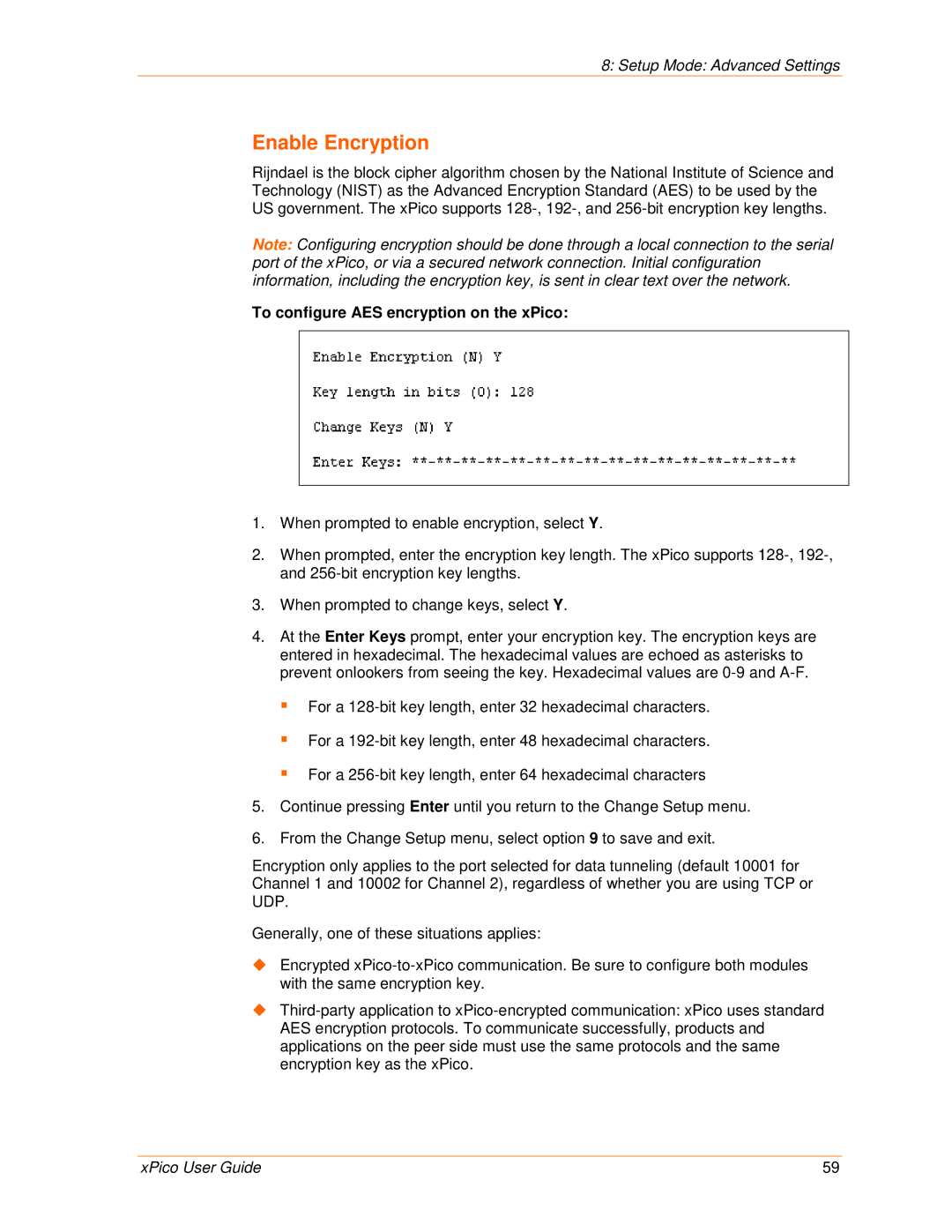
8: Setup Mode: Advanced Settings
Enable Encryption
Rijndael is the block cipher algorithm chosen by the National Institute of Science and Technology (NIST) as the Advanced Encryption Standard (AES) to be used by the US government. The xPico supports
Note: Configuring encryption should be done through a local connection to the serial port of the xPico, or via a secured network connection. Initial configuration information, including the encryption key, is sent in clear text over the network.
To configure AES encryption on the xPico:
1.When prompted to enable encryption, select Y.
2.When prompted, enter the encryption key length. The xPico supports
3.When prompted to change keys, select Y.
4.At the Enter Keys prompt, enter your encryption key. The encryption keys are entered in hexadecimal. The hexadecimal values are echoed as asterisks to prevent onlookers from seeing the key. Hexadecimal values are
For a
For a
For a
5.Continue pressing Enter until you return to the Change Setup menu.
6.From the Change Setup menu, select option 9 to save and exit.
Encryption only applies to the port selected for data tunneling (default 10001 for Channel 1 and 10002 for Channel 2), regardless of whether you are using TCP or UDP.
Generally, one of these situations applies:
Encrypted
xPico User Guide | 59 |
